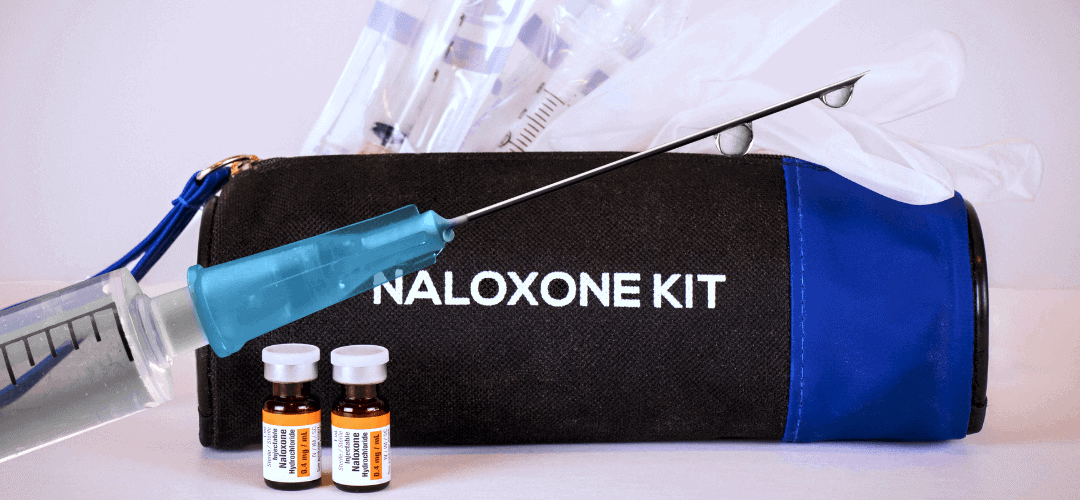Since the turn of the century, the nation has been plagued with a catastrophic fourfold increase in the number of opioid overdose deaths. First came a wave of individuals addicted to prescription narcotics in the wake of a sharp increase in them being prescribed in the 1990s. This fed into an increased number of people addicted to and overdosing on heroin that began around 2010. In 2013, fentanyl came on the scene, bringing us to the final, present devastating result. In the twenty years between 1999 and 2019, this amounted to around 500,000 fatalities.
The distress of the COVID-19 pandemic seems to have only made it worse, with a 38.4% increase in deaths between June 2019 and May 2020.
Addiction, even to the strongest opioids, is a treatable condition with time and willpower. However, overdoses are emergencies that need immediate action. Recently, there has been a growing interest in one easily accessed medication that’s helping thousands get the emergency treatment they need: Narcan.
What is Narcan?
Narcan, also known by its generic name Naloxone, is a medication that has proved critical in saving countless lives. It is an opioid antagonist meaning that it can attach to opioid receptors in the nervous system, blocking out the effects of other opioids. It can rapidly stop and reverse the effects of an opioid overdose – although it is not a treatment in itself.
It comes in three forms: a nasal spray inhaled through a small applicator, an injection into arm or thigh muscle, and an auto-injector. No type reaches a toxic level and can be continuously given until breathing resumes.
Narcan buys individuals experiencing an opioid overdose between thirty and ninety minutes to receive medical treatment. In a person suffering from or approaching respiratory depression, these minutes may be life-saving. Even in its early years from 1996 to 2014, when there were more boundaries to naloxone access, this amounted to 26,463 confirmed overdose reversals.
History of Narcan
Narcan was developed by a scientist named Jack Fishman in the early 1960s and later patented in 1971. Despite its promising potential to save lives, prescription laws meant it wasn’t used outside of hospital and emergency response settings until recent years. At the moment, nearly every state has passed or allowed local standing orders that make it accessible to the public without a prescription.
Who Is Using Narcan?
Narcan is so simple and risk-free that it can be administered once or more times by a trained professional, informed loved one, or even passerby.
The people performing the majority of Narcan administration are police officers. Various county departments all over the country have implemented Narcan training programs and begun to offer the medication to their officers responding to overdose calls. This works incredibly well. Within three and a half years of beginning their first Narcan pilot training program in the Suffolk County Police Department in New York, 1,300 officers had been certified in the drug’s use, and 390 severe opioid overdoses had been reversed.
There has also been an Italy-like move to remove boundaries stopping everyday people from purchasing this drug. In the US, prescription requirements have been removed from the medication in the vast majority of states. Kits are now offered by many harm reduction programs and needle exchanges, they are even available for purchase at pharmacies without a prescription.
Increased availability has allowed many more people to act as first responders. One Narcon carrier recalls:
“Before the pandemic, when I was working in a more central area. I got Narcan training as soon as I could and made sure there were kits in the workplace in addition to the one in my bag. I simply didn’t want to see someone die, knowing I could have prevented it. In practice, we only used the kits two or three times, as our neighborhood was already thick with them. And as far as saving lives, we managed to keep people alive and breathing until paramedics arrived, even if they hadn’t snapped awake yet.” – Anonymous
A Narcan user may be a resident like the respondent above; however, laypeople, often users themselves, who are administering this treatment at the scene are thought to be responsible for stopping around 6% of all overdose deaths. We are talking about addicted users intervening and keeping other users safe and even self-administering on rare occasions. Narcan distribution also gives the loved ones of people with opioid addictions the power to help protect their friends or family member from an overdose.
Nationwide, these frontline carriers are making a considerable difference. A national-level study has found that simply enacting naloxone access laws resulted in a 14% decrease in opioid overdose deaths.
How Effective is Narcan?
There is no denying that Narcan is an important resource in our fight to protect each other, and when a crisis is playing out before your eyes, you need to be able to respond immediately. Narcan is effective at reversing overdose symptoms – stabilizing the person suffering with between 75-100% efficacy. However, these effects do wear off. Ultimately, what this medication does is delay overdose, not treat it. Following stabilization, every second counts as the person overdosing needs to be immediately taken to receive treatment.
Despite the dark statistics mentioned, when we have resources like Narcan, nearly every opioid overdose is reversible. In the end, the only real defense against overdose is sobriety, but this takes time and effort on the part of the individual.
You may be suffering from addiction personally, know a user, live in a high-risk area, or want to be prepared for what you don’t know. Accessing and carrying Narcan can buy someone the minutes they need to stay with us.
Find out where you can access a dose today and keep it accessible. You never know when someone might need the gift of time.


